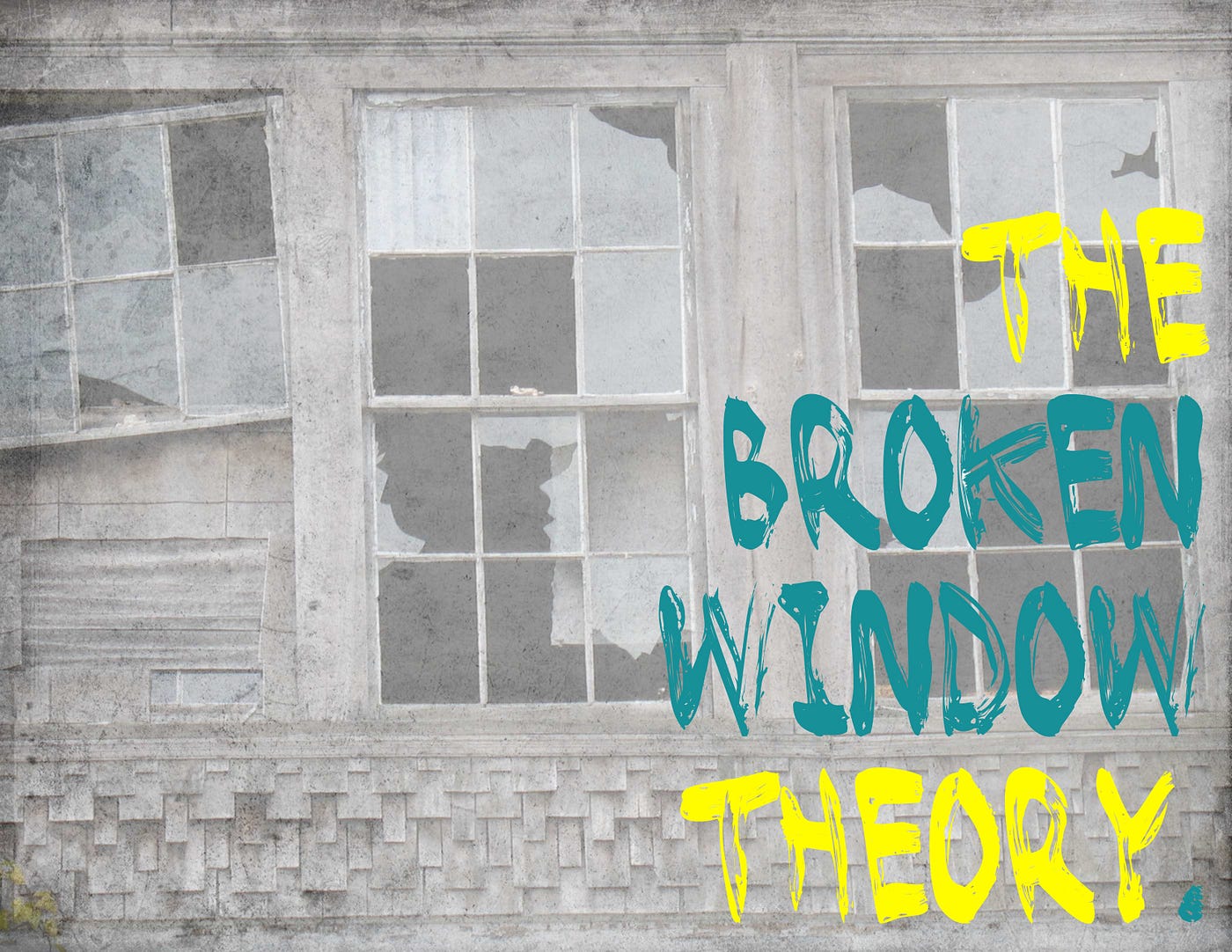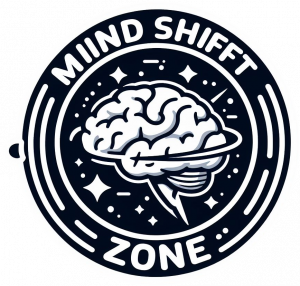In the middle of the urban jungle in the midst of a symphony involving buzzing crowds, roaring cars and the occasional whirl of the wind rushing through concrete canyons is a theory that has subtly changed our notion of the relationship between crime, order and the vitality of communities. Broken Windows Theory, like an eye, shows the way that small indicators of neglect in the urban environment can transform into a spectrum decline in society. This journey of narrative will not only reveal the origins and the fundamental tenets of this theory but also draws an enthralling illustration of its major architects and their massive impact on the urban landscape.
Introduction to Broken Windows Theory
Under the surface of our lives, whether in the defiant disintegration of a decaying structure or the hushed call for attention from graffiti-strewn walls. The Broken Windows Theory offers a powerful lens to see the intricate dance between behavior and environment, decay and order, the criminal and the community. This introduction seeks to answer the question: what is the Broken Window Theory?
Origins and Key Principles
The story of our time begins in the enlightened minds of two brilliant philosophers, James Q. Wilson and George L. Kelling, who in the early 1980s suggested a theory that was as straightforward in its formulation as it was significant in the implications: A damaged window that is not repaired in a structure indicates that nobody cares and invites additional neglect and greater crime. The theory argued that crime isn’t inevitable, but rather an inevitable decline that stems from the visible evidence of disorder and neglect in the community.
The Broken Windows Theory of Policing is not just an academic theory, but was an underlying cause for change in cities such as New York, where the strategies that were influenced by the theory were implemented with enthusiasm. As noted by Wilson & Kelling in 1982, law enforcement and policymakers were able to take on the task and targeted minor offenses like graffiti and turnstile jumping with the intention of preventing serious crime. The results were impressive leading to discussions and debate on the actual drivers of the urban reduction in crime sparking debates about the true drivers of these improvements, as well as providing broken window theory examples.
Theoretical Underpinnings and Key Figures
The deeper analysis of the Broken Windows Theory is anchored to a deep base of social psychology and broken window theory sociology, using previous research, like Philip Zimbardo’s famous car experiment that demonstrated the speed at which an indication of disorder, such as an abandoned vehicle, can be the target of vandalism. The experiment laid the foundation to understand how environmental cues influence the behavior of individuals towards compliance or deviation.
Wilson and Kelling in their seminal research, did not just identify a problem, but also outlined an avenue for improvement, suggesting that the preservation of urban areas could play a significant function in encouraging an atmosphere of belonging and community and thus reducing the risk of criminality. Their zeal for community-based policing that is proactive has since been influential to cities around the world which has prompted a review of the way law enforcement agencies interact with the communities they serve.
Broken Windows Theory, as elucidated by Zimbardo in 1969, with its nitty-gritty understanding of the interplay between the environment and behavior remains an inspiration for people who are navigating the complicated terrain of urbanization and prevention of crime. It highlights that the wellbeing of our communities can be seen not only by an absence of criminal activity, but in the presence of love and attention as well as respect for each other. When we walk through our communities, each clean and fixed window, and alleyway, is a testimony to our collective responsibility and ability to influence the environment we live in.
Application of Broken Windows Theory

Broken Windows Theory, once just a spark of understanding among social researchers, has sparked an explosion of change across cities and police strategies across the world. The study of its use uncovers the many facets of tackling the smallest signs of disorder, thereby creating healthier, more stable communities.
In Crime Prevention
The strategies for prevention of crime have been transformed with the Broken Windows Theory. The approach is focused on reducing minor infractions like graffiti, public drunkenness or evasion of fare-payments to communicate that disorder is not to be accepted. This method, which is more than just a simple enforcement of minor crimes is a way to create a sense of security and order in the entire community. It’s about creating a community that ensures crime is not only stopped but also prevented as public spaces turn into spaces for community involvement instead of hotspots for crime.
Urban Planning and Design
The impact of Broken Window Theory extends into the realm of urban design and planning and design, where its principles guide the design of spaces that foster community pride and discourage neglect. Urban architects and urban designers who are influenced by the concept are adamant about the creation of easily accessible, well-maintained public spaces that encourage interactions between people and discourage the destruction of property and vandalism. The focus is on a thoughtful and well-designed design, including adequate illumination, natural spaces and public art that creates a feeling of belonging and a sense of security within the residents. This is a way of proving that the environment influences our behaviour; through designing cities that are mindful and nurture communities that are caring.
Examples of Successful Implementation
The practical application of Broken Windows Theory in real-world settings has yielded remarkable transformations in cities afflicted with neglect and crime. The crackdown in New York against subway graffiti and evasion of fare payments during the 1990s is an example of the theory’s effectiveness, resulting in substantial reductions in crime which paved the way to a more extensive urban renewal. The same strategies are implemented in cities such as Los Angeles, where community cleanup and programs to remove graffiti have revitalized communities and increased public security.
These cases demonstrate the versatility of the Broken Window Theory and its ability to bring about positive change in a variety of urban environments. Through addressing the minor evidence of chaos, urban areas are able to imagine their futures in new ways, creating spaces where community and safety thrive together.
Criticisms and Controversies

Although it is true that the Broken Windows Theory has been influential in creating urban policy and police strategies, it hasn’t been without controversy. This part of the article examines the core of the debates surrounding the theory and provides an in-depth look at the practical and academic challenges it has to face.
Academic and Practical Critiques
The theory’s critics claim that it simplifies the complexity of community and criminal dynamics. The academics stress that correlation is not causality; the decrease in the rate of crime observed in the areas where the theory was applied may not be the direct result of dealing with minor violations. Additionally, the practical criticisms point out the potential for this strategy to result in over-policing and the criminalization of poor people in communities that are marginalized. The brunt of adversity in police tactics focuses on minor violations. These critiques demand a deeper understanding of crime in urban areas and an approach to community policing that respects the dignity of every citizen.
Revisiting the Theory: Modern Perspectives
In response to criticisms, there has been a desire to revisit and improve The Broken Windows Theory, integrating contemporary views on social justice and involvement in the community. Recent debates have highlighted that it is crucial to address fundamental factors that contribute to urban decay and criminality like economic inequity and inaccessibility to social services, instead of just focusing on signs of disorder. This new perspective calls for a holistic policy for urban, using the theories to inform broad social interventions that create an inclusive and resilient community.
Broken Windows Theory in Modern Urban Environments
Broken Windows Theory continues to influence the design and management of urban spaces, while adapting to changing circumstances and taking lessons from both failures and successes.
Impact on Community Policing
The contemporary version of the Broken Windows Theory has significantly changed the community policing strategies that emphasize cooperation between law enforcement and the communities. This strategy focuses on establishing trust and respect for each other, and acknowledges how effective prevention of crime is being aware of and responding to community concerns. Through fostering an open dialogue and collaboration with law enforcement, agencies can collaborate with residents to solve issues prior to their escalating, demonstrating an empathetic, efficient application of the theories.
Role in Creating Safer Neighborhoods
The use of the Broken Windows Theory in contemporary urban areas goes beyond police work to include a wider view of community growth and wellbeing. Initiatives that aim to revitalize public spaces, encourage economic growth, and deliver social services are considered to be ways to build safe, vibrant communities. By integrating these strategies in conjunction with the theories of the importance of keeping order and dealing with the signs that are neglected. Communities are able to develop environments in which safety and well-being of the community are firm.
Strategies for Positive Environmental Influence
When we look deeper into the history of Broken Windows Theory, it is clear that its real strength lies not in the enforcement of minor crimes, however, it is in its capacity to create strategies that positively impact the environment and, consequently, social behavior.
Community Engagement and Empowerment

The key to transforming urban areas is the development of local communities. Involving residents in the care as well as the development of their communities does not just create an attitude of ownership and pride but also builds bonds of friendship. Initiatives like Neighborhood watch, garden clubs and community clean-up day events will encourage residents to take an active part in the maintenance of their environment, thus reduce the chance for disorder and crime to grow. This strategy promotes the notion that being united in its efforts to look after its environment can result in an ongoing cycle of positive reinforcement. In this way, maintained areas deter crime and foster an atmosphere of well-being for all.
Design and Maintenance of Urban Spaces
Community engagement is akin to the planning and management of urban areas. Urban designers and planners play an important role in creating spaces that naturally deter criminal activity and encourage good social interaction. Things like well-lit streets, lively areas for public use, as well as barriers-free designs can contribute to a feeling of security and accessibility. Furthermore, the incorporation of parks and green spaces in urban planning can give residents a chance to relax and build community connections. By focusing on the aesthetics and functional aspects of urban spaces cities not only improve living standards of their residents, but also provide natural protections against the spread of criminality and disorder.
Conclusion
Looking back at the journey that took place from the beginning of Broken Windows Theory to its application and criticism, incorporating the broken windows theory definition and exploring broken windows theory sociology, a few important points highlight the theory’s complexity and its ongoing significance.
Summary of Key Points
Broken Windows Theory has profoundly affected the way that police officers, policymakers and urban planners think about ways to reduce crime as well as the growth of communities. The theory’s fundamental premise, that the maintenance and monitoring of urban areas can deter the spread of disorder and crime, has led to strategies that go beyond policing to include urban design and community engagement. The theory has also sparked debate and revision, inviting us to continually explore questions like what is broken window theory and what is the broken windows theory in the context of modern challenges.
Future Directions for Research and Practice
Moving forward, the evolution in the development of the theory of broken windows presents an opportunity to gain a better understanding of its underlying principles and how they can be applied. Future research may examine the relationship between community-led and law enforcement initiatives, examining the ways in which these strategies can be incorporated to create spaces that are secure and welcoming. There is also an increasing need to consider how the theory could be modified to meet the problems of contemporary urban settings, including social inequality, economic inequalities and digital gap. In the process of continually refining our strategies to improve environmental impacts, we can ensure that the foundation of the Broken Windows Theory continues to change in a manner that benefits everyone in this urban web.











